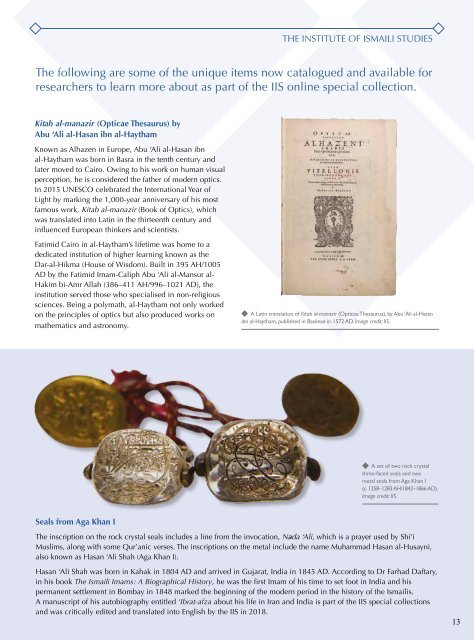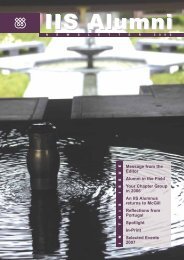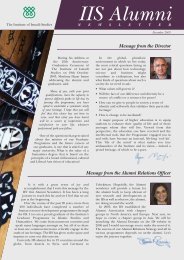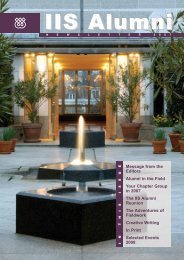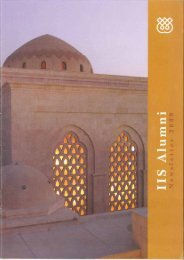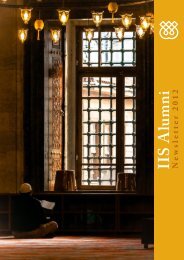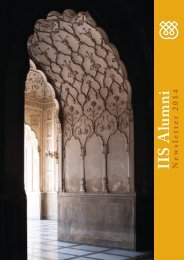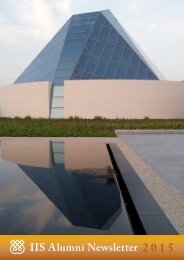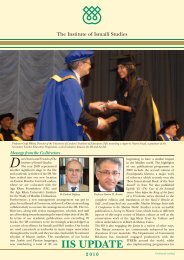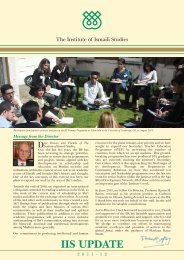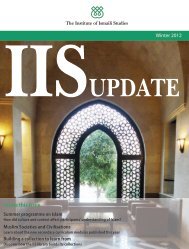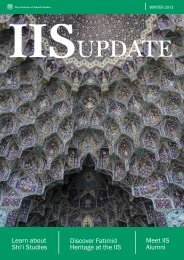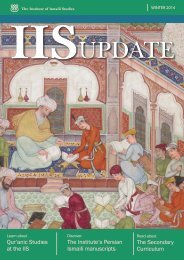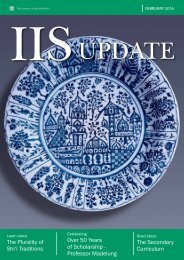IIS UPDATE Magazine Edition 20
You also want an ePaper? Increase the reach of your titles
YUMPU automatically turns print PDFs into web optimized ePapers that Google loves.
THE INSTITUTE OF ISMAILI STUDIES<br />
The following are some of the unique items now catalogued and available for<br />
researchers to learn more about as part of the <strong>IIS</strong> online special collection.<br />
Kitab al-manazāẓir (Opticae Thesaurus) by<br />
Abu ‘Ali al-Hasan ibn al-Haytham<br />
Known as Alhazen in Europe, Abu ‘Ali al-Hasan ibn<br />
al-Haytham was born in Basra in the tenth century and<br />
later moved to Cairo. Owing to his work on human visual<br />
perception, he is considered the father of modern optics.<br />
In <strong>20</strong>15 UNESCO celebrated the International Year of<br />
Light by marking the 1,000-year anniversary of his most<br />
famous work, Kitab al-manazir (Book of Optics), which<br />
was translated into Latin in the thirteenth century and<br />
influenced European thinkers and scientists.<br />
Fatimid Cairo in al-Haytham’s lifetime was home to a<br />
dedicated institution of higher learning known as the<br />
Dar-al-Hikma (House of Wisdom). Built in 395 AH/1005<br />
AD by the Fatimid Imam-Caliph Abu ‘Ali al-Mansur al-<br />
Hakim bi-Amr Allah (386–411 AH/996–1021 AD), the<br />
institution served those who specialised in non-religious<br />
sciences. Being a polymath, al-Haytham not only worked<br />
on the principles of optics but also produced works on<br />
mathematics and astronomy.<br />
A Latin translation of Kitab al-manazir (Opticae Thesaurus), by Abu ‘Ali al-Hasan<br />
ibn al-Haytham, published in Basileae in 1572 AD. Image credit: <strong>IIS</strong>.<br />
A set of two rock crystal<br />
three-faced seals and two<br />
metal seals from Aga Khan I<br />
(c. 1258–1283 AH/1842–1866 AD).<br />
Image credit: <strong>IIS</strong>.<br />
Seals from Aga Khan I<br />
The inscription on the rock crystal seals includes a line from the invocation, Nada ‘Ali, which is a prayer used by Shi‘i<br />
Muslims, along with some Qur’anic verses. The inscriptions on the metal include the name Muhammad Hasan al-Husayni,<br />
also known as Hasan ‘Ali Shah (Aga Khan I).<br />
Hasan ‘Ali Shah was born in Kahak in 1804 AD and arrived in Gujarat, India in 1845 AD. According to Dr Farhad Daftary,<br />
in his book The Ismaili Imams: A Biographical History, he was the first Imam of his time to set foot in India and his<br />
permanent settlement in Bombay in 1848 marked the beginning of the modern period in the history of the Ismailis.<br />
A manuscript of his autobiography entitled ‘Ibrat-afza about his life in Iran and India is part of the <strong>IIS</strong> special collections<br />
and was critically edited and translated into English by the <strong>IIS</strong> in <strong>20</strong>18.<br />
13


